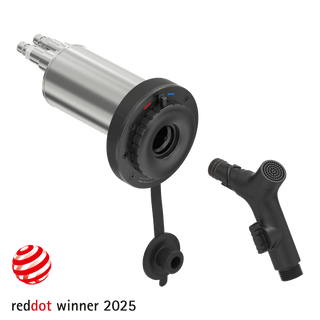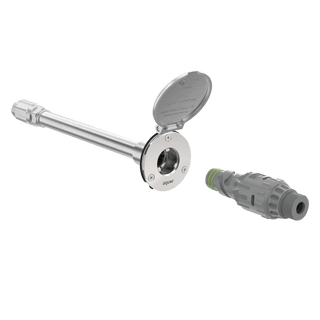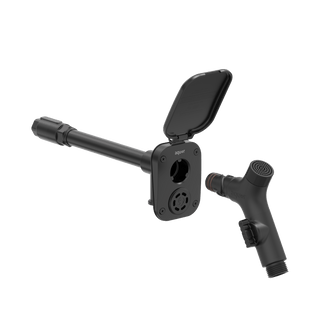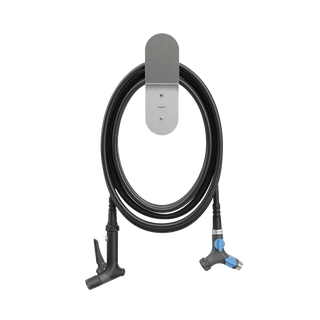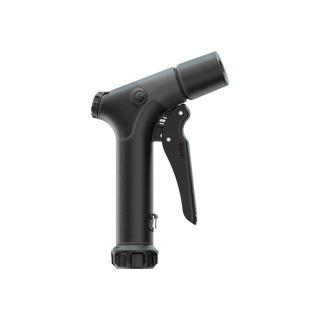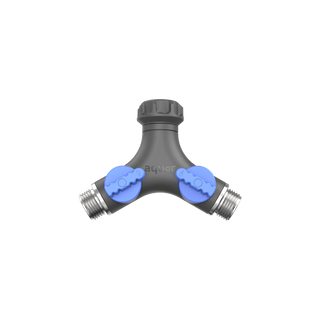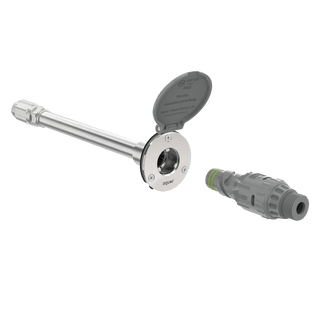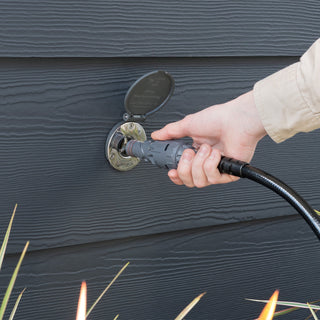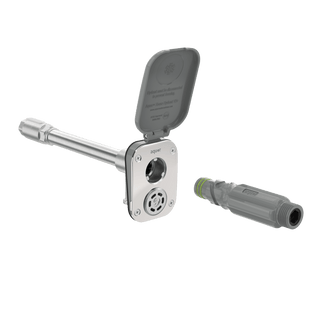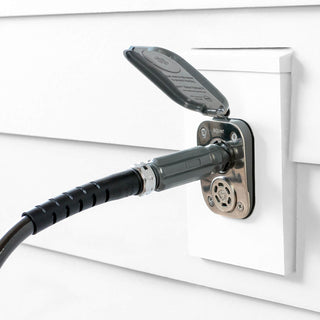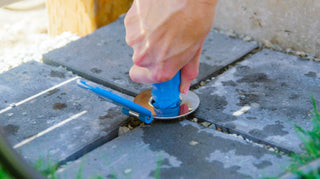Outdoor Faucet Maintenance Guide
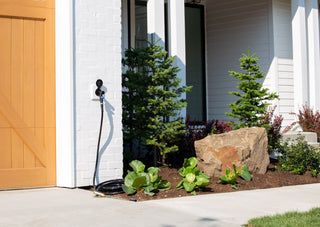
Properly maintaining your outdoor faucet will extend its lifespan considerably, especially if you frequently use your faucet. These fixtures often go unattended leading to issues down the road, ranging from minor leaks to burst hose bibs, which can cause costly damages.
Let’s go over outdoor faucet basics, key maintenance practices, and how to troubleshoot common issues.
Understanding Outdoor Faucets
Hose Bibs

Also known as spigots, hose bibs are one of the most common types of outdoor faucets. Hose bibs are short fixtures that usually reside entirely on the exterior of the home’s siding.
Sillcocks

Sillcocks are essentially hose bibs with longer stems that extend into a home’s wall and often offer freeze protection. The valve closes at the back end of the stem, which is generally located in a wall surrounded by insulation or in a crawl space / basement.
Want to learn more? Read our article about Hose Bibs vs. Sillcocks.
House Hydrants

Aquor’s House Hydrants offer superior freeze protection and provide a sleek, low-profile aesthetic. These modern outdoor faucets utilize a quick-connection system for instant water access.
Outdoor Faucet Components
Most outdoor faucets include similar components: a valve handle, packing nuts, threading, and flange. Depending on the type of outdoor faucet, the unit may also include a stem. The valve handle, packing nuts, threading, and washers often require repair or replacement over time.
House Hydrants are composed of fewer components than standard outdoor faucets. With only one moving part inside the hydrant body, the operating rod, there aren't as many points of failure and less need for maintenance over time.
Best Practices for Outdoor Faucet Maintenance
Inspection and Prep
Spring through summer is prime time for outdoor faucet usage. Make sure your outdoor faucets are ready to go as the weather warms up, so you don’t run into trouble during peak watering season. You need to be able to fill that kiddie pool and rinse off Fido after all. Check for leaks at the threading and handle, and replace parts, such as washers, if needed.
Winterizing
Preparing your faucet for winter is arguably the most important prep step during the year. Countless homes across the US experience leaking or burst outdoor faucets during the winter due to improper winterization. If you’re located in a colder climate then we highly recommend installing a frost-free sillcock. You can also opt for an Aquor House Hydrant, which makes winterizing a one-second process—simply disconnect the connector after use. If you don’t have a frost-free option, then it’s important to utilize exterior insulation such as a foam cover. If you’re unable to accommodate a frost-free sillcock or a House Hydrant then it may be necessary to shut off the water to your outdoor faucet and drain the plumbing to prevent freezing and burst pipes.

Cleaning and Lubricating
One of the most common debris-related issues in outdoor faucets is the buildup of sediment from hard water. Over time, hard water will leave mineral deposits in plumbing lines and plumbing fixtures. Generally, the best practice is to soften the water where it enters your home to reduce hardness before it makes its way through your plumbing. If you live in an area with fairly hard water, we recommend hiring a professional to install a water softener.
If you’re looking to clean out mineral buildup in your faucet, one of the best home remedies is vinegar. You can pour vinegar in a bag then tie the bag around the faucet’s threading, letting it soak for several minutes. The vinegar will help loosen the sediment buildup. You can use vinegar with a toothbrush or rag to wipe off any excess debris.
If you’re hearing squeaking noises or having difficulty turning your valve handle, then extra lubrication may do the trick. Use plumber’s grease to lubricate joints and nuts, making the faucet easier to use and reducing the wear and tear of moving parts.
If you’re looking for an outdoor faucet that requires much less maintenance, Aquor’s House Hydrant is composed of marine-grade stainless steel and only has one internal moving part. This outdoor faucet is built to last decades of use.

Common Outdoor Faucet Issues
Leaks

Leaking is one of the most common outdoor faucet issues. There can be several reasons why your outdoor faucet is dripping, so it’s important to figure out where the leak is originating. Usually, a leak is caused by a worn-down washer or packing nut, which can be replaced with parts from your local hardware store.
Worn Threads

Worn-down threading is a more difficult issue to deal with since it’s generally not a replaceable part. Technically, you could apply plumber’s tape to the threads to reduce leaking, although it’s probably best to replace the entire unit to avoid more issues moving forward.
Water Pressure
Low or high water pressure is another common issue that homeowners experience. Irregular water pressure is often caused down the plumbing line. For example, hard water can create mineral buildup in the piping, which can cause irregularities in water pressure and damage the plumbing over time.
Freezing

Bursting hose bibs is one of the most common and costly faucet issues that homeowners face. Refer to our maintenance tips to prevent your outdoor faucet from freezing. If you’re currently dealing with a burst bib, read our article to figure out what to do next.
For a more in-depth overview, view our blog about troubleshooting common outdoor faucet issues.
Want to upgrade your outdoor faucet? Learn how to choose the right outdoor faucet for your home.

